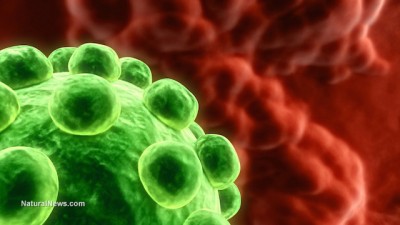
Glyphosate is the active ingredient in the herbicide Roundup. The use of glyphosate is widespread throughout Europe. However, on 20 March the World Health Organisation’s International Agency for Research on Cancer (IARC) said that glyphosate was “classified as probably carcinogenic to humans.” This is just one step below the risk designation of “known carcinogen.”
Glyphosate has been detected in human bodies, food, water and in the air. Its use has been strongly associated with various diseases (see this and this).
Following the WHO’s classification, the European Food and Safety Authority (EFSA) has been conducting an evaluation of glyphosate and will send its final conclusions to the European Commission (EC) for consideration within the next few days. The EC will then decide whether this herbicide should be included in the EU’s list of approved active substances.
The original sanctioning and testing of glyphosate for commercial use was seriously flawed: for example, see this, this, this, and this which highlight the non-transparent, secretive and seriously compromised processes that smack of regulatory delinquency at best and outright fraud at worst in order to protect and benefit the interests of rich agribusiness.
Sustainable Pulse has moreover discovered documents from 1991 that show how the US Environmental Protection Agency (EPA) was fully aware of glyphosate’s carcinogenic potential. In 1985, the carcinogenic potential of glyphosate was first considered by an EPA panel. This committee went on to classify glyphosate as a Class C Carcinogen with “suggestive evidence of carcinogenic potential.”
This Class C classification was changed by the EPA six years later to a Class E category which suggests “evidence of non-carcinogenicity for humans.” The conclusion is that the US government is to blame for allowing glyphosate onto the commercial market because it wanted to push it as part of as global campaign to support the US biotech industry in its attempt to dominate global agriculture.
In other words, the health of the public was put before the need to protect company profits and foreign policy aims.
According to Dave Schubert, head of the cellular neurobiology laboratory at the Salk Institute for Biological Studies in La Jolla, California:
“There are a number of independent, published manuscripts that clearly indicate that glyphosate… can promote cancer and tumor growth. It should be banned.”
New report: human guinea pigs
In their recent paper, ‘Glyphosate, pathways to modern diseases IV: cancer and related pathologies’, Anthony Samsel and Stephanie Seneff paper reviewed the research literature to evaluate the carcinogenic potential of glyphosate. The paper, published in the ‘Journal of Biological Physics and Chemistry’ and to be made available online shortly, concludes that glyphosate has a large number of tumorigenic effects on biological systems, including direct damage to DNA in sensitive cells, disruption of glycine homeostasis, succinate dehydrogenase inhibition, chelation of manganese, modification to more carcinogenic molecules, such as N-nitrosoglyphosate and glyoxylate, disruption of fructose metabolism, etc.
Samsel and Seneff state that epidemiological evidence supports strong temporal correlations between glyphosate usage on crops and a multitude of cancers that are reaching epidemic proportions, including breast cancer, pancreatic cancer, kidney cancer, thyroid cancer, liver cancer, bladder cancer and myeloid leukaemia.
The authors support these correlations through an examination of Monsanto’s early studies on glyphosate and explain how the biological effects of glyphosate could induce each of these cancers.
Samsel and Seneff conclude:
“We have reviewed the research literature on glyphosate and on the biological processes associated with cancer, and we have provided strong evidence that glyphosate is likely contributing to the increased prevalence of multiple types of cancer in humans. Monsanto’s own early studies revealed some trends in animal models that should not have been ignored. Forty years of glyphosate exposure have provided a living laboratory where humans are the guinea pigs and the outcomes are alarmingly apparent. We believe that the available evidence warrants a reconsideration of the risk/benefit trade-off with respect to glyphosate usage to control weeds, and we advocate much stricter regulation of glyphosate.”
They go on to state that multiple studies have shown that glyphosate damages DNA, a direct step towards tumorigenicity, and that epidemiological studies strongly support links between glyphosate and multiple cancers, with extremely well-matched upward trends in multiple forms of cancer in step with the increased use of glyphosate on corn and soy crops.
The authors state that while these strong correlations cannot prove causality, the biological evidence is strong to support mechanisms that are likely in play, which can explain the observed correlations through plausible scientific arguments.
They argue that glyphosate’s links to specific cancer types can often be explained through specific pathologies. For example, glyphosate’s action as an oestrogen mimetic explains increased breast cancer risk. Prostate cancer is linked to sarcosine, a by-product of glyphosate breakdown by gut microbes. Impaired fructose metabolism links to fatty liver disease, which is a risk factor for hepatic tumorigenesis. Impaired melanin synthesis by melanocytes due to deficiencies in the precursor, tyrosine, a product of the shikimate pathway, can explain increased incidence of skin melanoma. This is compounded by tryptophan deficiency, as tryptophan is also protective against UV exposure. Manganese deficiency stresses the pancreas and impairs insulin synthesis, and this could explain the recent epidemic in pancreatic cancer. Increased oxalate, due in part to the proprietary formulations, stresses the kidney and contributes to risk of renal tumours. Glyphosate’s accumulation in bone marrow can be expected to disrupt the maturation process of lymphocytes from stem cell precursors. Glycine forms conjugates with organic benzenederived carcinogenic agents, and glyphosate likely interferes with this process. Glyphosate’s interference with CYP enzyme function impairs detoxification of multiple other carcinogenic agents, increasing their carcinogenic potential.
Samsel and Seneff conclude that, overall, the evidence of the carcinogenicity of glyphosate is compelling and multifactorial. Now we wait for the results and recommendations of the EFSA’s evaluation.
Given the overwhelming evidence to ban glyphosate, we can only hope that, this time, it doesn’t end up as a case of ‘move along, nothing to see‘, as the public interest and public health are again sacrificed on the altar of private commercial interests and corporate profit.
Source Article from http://www.globalresearch.ca/links-between-glyphosate-and-a-multitude-of-cancers-that-are-reaching-epidemic-proportions/5486711
Related posts:
Views: 0
 RSS Feed
RSS Feed

















 November 5th, 2015
November 5th, 2015  Awake Goy
Awake Goy 





 Posted in
Posted in  Tags:
Tags: 
















